Jeff Stubblefield, PA-C
As a physician assistant neurological surgical first assist in Anchorage, Jeff Stubblefield sees a lot of need. “It’s impressive in a bad way,” he says of the challenges to meet the health needs of the Alaska Native population. “Underserved is the word, but I don’t know that it captures the whole issues we have here.
An employee of the Alaska Native Tribal Health Consortium (ANTHC), which provides health services to 130,000 Alaska Natives and American Indians, Jeff is clear not to fault the medical side. “There’s a lot of obstacles we face trying to care for this population,” he says. “When it’s winter time here I can have somebody with a ruptured aneurysm sitting in cold bay for three days. And that’s just weather.”
Prior to being given a recommendation to the Neurosurgery clinic most patients have seen other providers over several years for relief of their symptoms. By the time Jeff sees some patients at the Alaskan Native Medical Center in Anchorage, “They may have seen a health aide in a remote village, or perhaps a mid-level or physician at a regional clinic.”
Even in instances where the need for neurological services is identified accessing care can be difficult. Jeff recounts a favorable scenario. “I’ll get a phone call from Savoonga. They’ll say, ‘I’ve got somebody who fell down. They’re having paresthesia, or they’re myopathic or what have you.’ And I can expedite those to a certain extent, but the geographic space of Alaska, weather, transportation obstacles, and the limited services available to the patients all work against speedy access.” Medivac planes trying to get patients out of rural communities have had to wait days due to snow, rains, wind or fog.
Over the years Jeff has noticed a high incidence of aneurysms within the Native Alaskan population. “It’s extremely high up here,” he says. “It was something that I wasn’t quite prepared for.”
Because the Alaskan Native Medical Center is a level 2 trauma hospital, they see a small number of trauma patients who are not Native Alaskan. Over the years Jeff has noticed a high incidence of aneurysms within the Native Alaskan population. “It’s extremely high up here,” he says. “It was something that I wasn’t quite prepared for.” In the past three or four years that Jeff’s been practicing, if he finds one aneurysm— whether it’s a ruptured aneurysm or one that’s an incidental finding— frequently somebody else in the family has had one as well. Sometimes he’s uncovered a history of multiple aneurysms within a family lineage. “The numbers that I was seeing within a single family unit were impressive.” He doesn’t know if there’s a familial link, and admits there’s no scientific evidence supporting that.
Jeff’s insight and adaptability are the result of 21 years in the military as an independent duty medical officer, or IDMT. This Air Force program required him to rotate through different specialties including ER, dental, surgery, family practice and aerospace medicine. He would practice medicine as an individual provider underneath the guidance of a physician in remote locations or, in the vernacular, downrange medicine. “You’re doing the medicine, you’re seeing patients, and you don’t have anyone else out there,“ he says.
 He started out in Desert Shield, then Desert Storm. “I went through all the rest of them,” he says. “Yeah, I got a couple of times in the theatre.”
He started out in Desert Shield, then Desert Storm. “I went through all the rest of them,” he says. “Yeah, I got a couple of times in the theatre.”
Jeff offered his talents as a MEDCAP (Medical Civic Action Program) at the invitation of host nations such as Vietnam, Cambodia, Laos and New Guinea. “I’ve hit just about every piece of dirt in the world,” he says. The Southeast Asian assignments were part of the POW/MIA missions mandated by Congress to recover the remains of US veterans from the Vietnam era war. In these situations he’d set up a clinic and provide medical services for the local people that worked with the American forensic pathologists on the recovery effort.
“I’d spent most of my adult life doing remote assignments in other countries, away from my family,” he says.
It was these remote medicine experiences where Jeff learned remote medicine, which served him well in Alaska. The military sent him out to small villages throughout the state where he provided basic medical and dental services. Jeff had spent much of his adult life in remote areas throughout the world. Facing retirement from the military, his wife and family wanted him to stay in a more populous setting. “I’d spent most of my adult life doing remote assignments in other countries, away from my family,” he says. “We were looking at the south central region of Alaska, whether that was in Eagle River, Palmer, Wasilla, or that area. The family was really okay with that.”
Jeff retired from the Air Force while at Joint Base Elmendorf-Richardson, his last duty station in 2009. It was time to apply his valued medical skills to the civilian population, and the MEDEX Northwest physician assistant training program in Anchorage provided that opportunity. The origins of the PA profession were with returning military veterans and, today, over 30% of the students come from the ranks of Army medics, Navy corpsmen or Air Force IDMTs.

“That’s what glued me to MEDEX,” says Jeff. Even at the MEDEX Information Session the faculty present were more than receiving of those candidates from a military background. “At MEDEX, it felt like I was transitioning from active duty to reserve status.” In 2010 Jeff entered MEDEX Anchorage Class 2, graduating in 2012.
While finishing up his second to last rotation in Valdez, Alaska, Jeff was recruited by the Alaska Native Medical Center to work as a neurological surgical first assist. “I had no real exposure to neurology,” he says. “I’d been in some inner theatre operating rooms where there was some brain surgery done, but I was not exposed to neurosurgery per se. I was never trained in it.” He had completed an earlier rotation at the hospital, but it wasn’t in neurosurgery.
Ash Marquardt, the Anchorage site director for MEDEX, explains how Jeff came to be offered the opportunity to work at the hospital in neurology. “We recommended him,” says Ash. “He’s knowledgeable. It’s true; Jeff didn’t exit MEDEX as a neurological surgical assist PA. But he has the tenacity to study what he needs to know. I’m sure he went into the job at ANTHC, got an idea of what was expected of him, went home for probably 3 or 4 months and just hit the books every night after work until he was tuned up. That’s the kind of guy he is. He may not know everything, but he’ll find out in short order. That’s a huge value, more by example when he’s precepting our students.”
“I get to expose these students to an inpatient population that’s very grateful for just honest care,” he says. “I think the students get a lot out of that.”
In his position at the Alaska Native Medical Center, Jeff has precepted as many as five PA and medical students within the year. “I get to expose these students to an inpatient population that’s very grateful for just honest care,” he says. “I think the students get a lot out of that.” This exposure gives the students a window into the Alaskan social system, and just how difficult it is for the patient. “It has a big impact on them,” he says of his students. “As long as they’re willing and eager to learn, I’m willing to give them an opportunity.”
Jeff also teaches as a guest lecturer at MEDEX. “He’s a natural teacher,” says Ash Marquardt. “A lot of this goes back to his military training.” In the service the emphasis is on teaching and training skills so that more than one person knows how to do the job. “Jeff can lay it out in steps instead of overwhelming someone with the entire task.”
Given the challenges of patient care in Alaska, Jeff has developed his own guiding principles. “When it comes to this, I’ve always been task oriented,” he explains. “The patient needs something, you do what you have to do to make it happen. Even when you have bad news for the patient, or you can’t do what they need, as long as I’m honest with them about it, I get a pretty good reception from the patient.”
“It’s not brain surgery,” he says.

